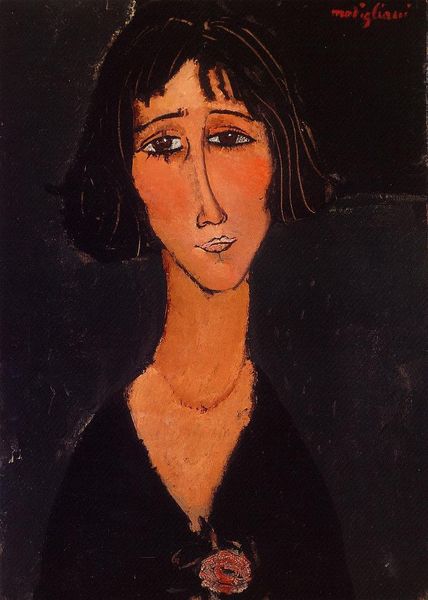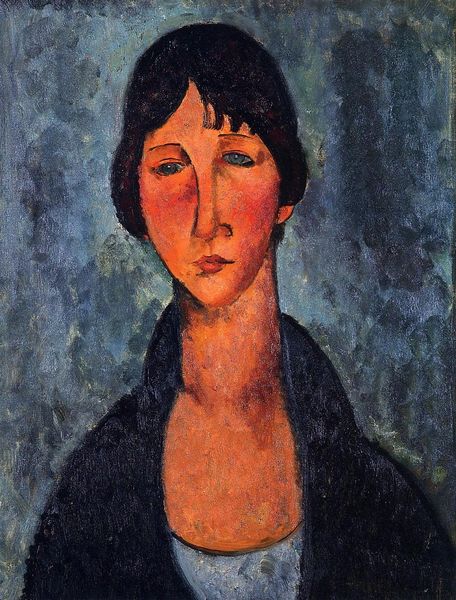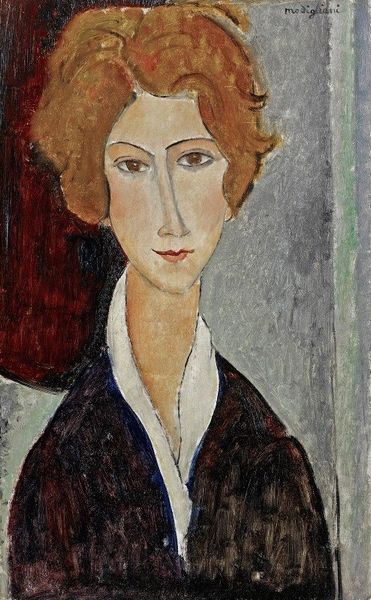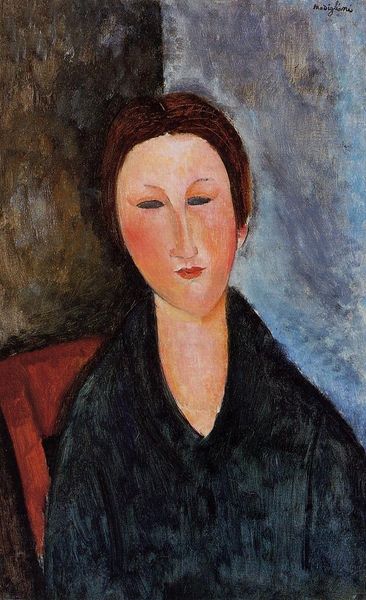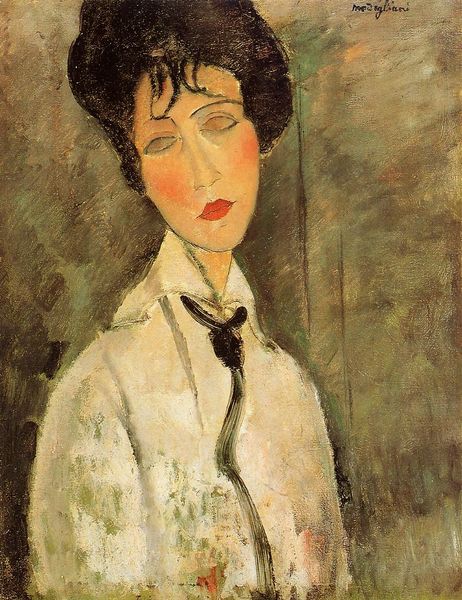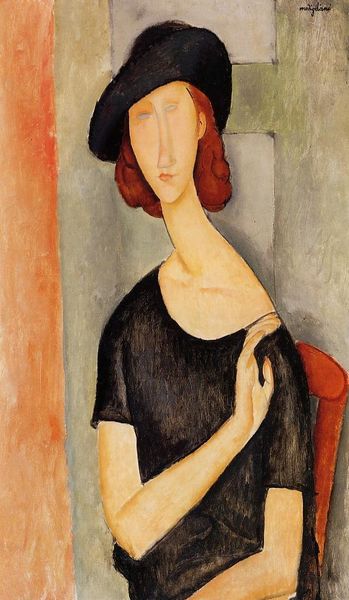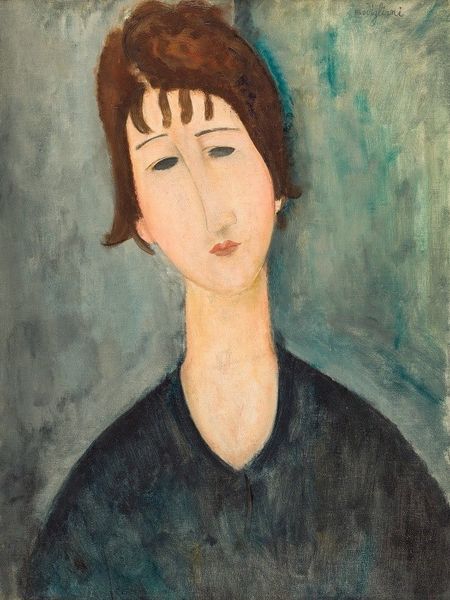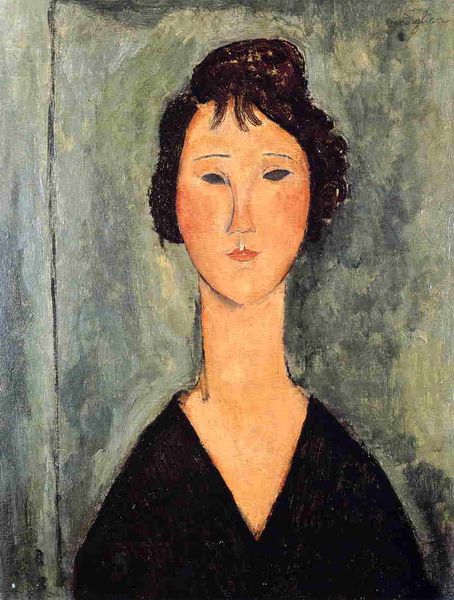
painting, oil-paint
#
portrait
#
art-nouveau
#
painting
#
oil-paint
#
figuration
#
oil painting
#
intimism
#
italian-renaissance
#
modernism
Dimensions: 46.74 x 33.53 cm
Copyright: Public domain
Editor: So, here we have Amedeo Modigliani's "Portrait of Madame Rachele Osterlind," painted in 1919 with oil on canvas. It strikes me as quite melancholic, and the subject appears very contemplative. What do you see in this piece? Curator: I see a carefully constructed image deeply rooted in the socio-cultural currents of early 20th century Paris. Consider Modigliani's status as an outsider – an Italian artist working within the Parisian avant-garde. The elongated features, reminiscent of African masks and Cycladic figures, weren't merely aesthetic choices. How do you think these "primitive" influences reflect broader artistic trends of the time? Editor: I guess they represented a desire to break away from established academic traditions and explore new ways of representing the human form. A search for authenticity? Curator: Precisely. And how does the portrayal of Madame Osterlind challenge conventional portraiture? It's not just about capturing a likeness. It's about conveying something deeper. The muted palette, the simplified forms – these choices direct the viewer's attention to the psychological space of the subject. Modigliani was actively shaping how we perceive identity, playing with the politics of representation at a time of significant social change. Her identity becomes fluid, molded by both the artist’s vision and the cultural gaze. Editor: I never thought about it that way before. The pose does seem staged, like she's performing introspection. It's less a faithful likeness and more of an... interpretation. Curator: Exactly. And that performance invites us to question the role of the artist and the museum itself in shaping our understanding of individuals and society at large. Think about whose stories get told and how. Editor: I see! Looking at it now, it’s much more than just a portrait; it’s a statement about the relationship between the artist, the subject, and the culture they inhabit. Curator: Indeed. And a valuable lesson on the complex and evolving nature of artistic representation.
Comments
No comments
Be the first to comment and join the conversation on the ultimate creative platform.

